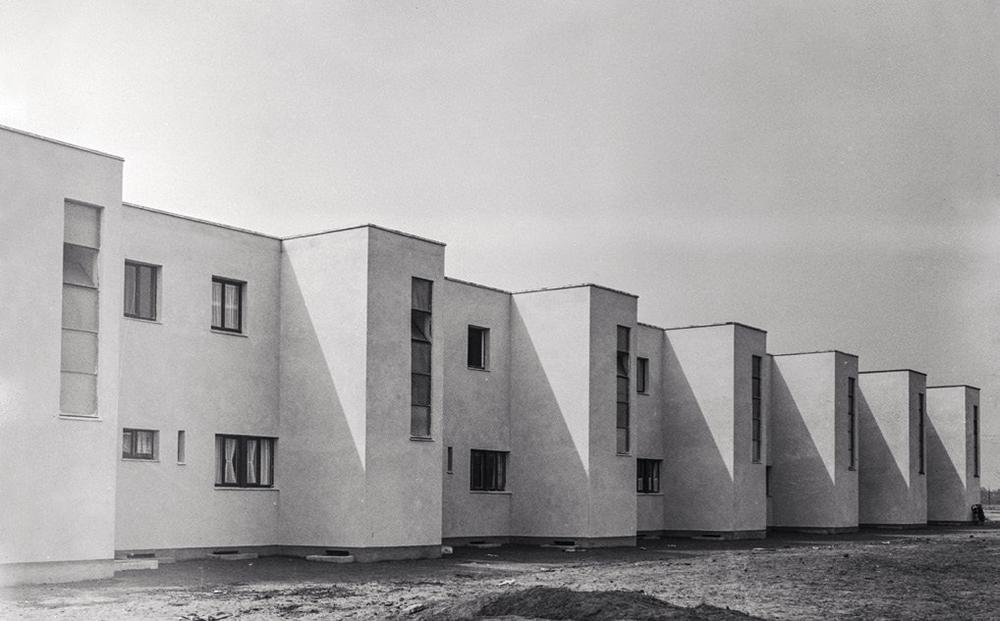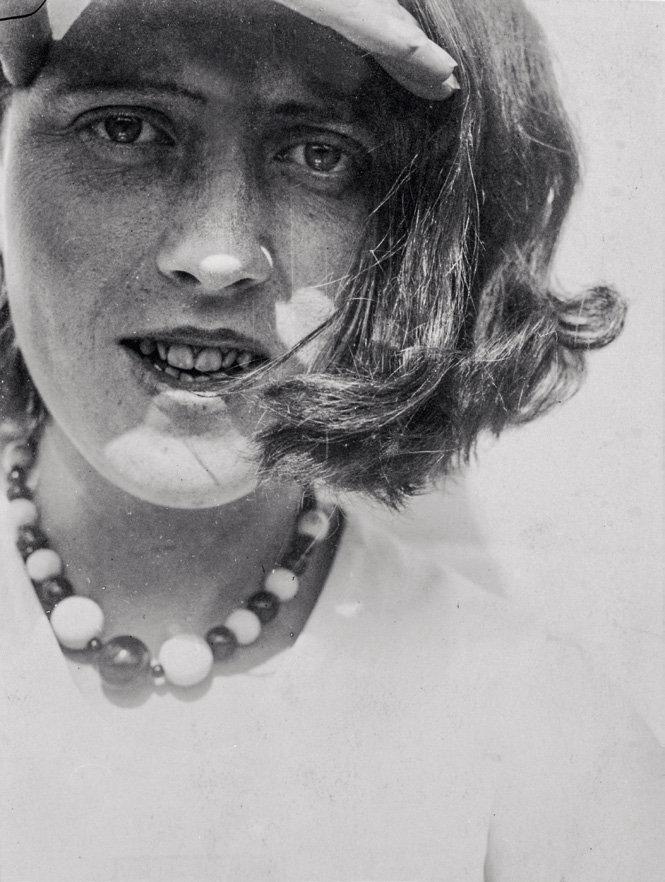Born: Anna Elisabeth Mathilde Kattina Both, 1905, Waldkappel, Germany
Died: 1985, Kassel, Germany
Matriculated: 1925
Locations: Germany, Italy
Architect, designer, and photographer Katt Both was born Anna Elisabeth Mathilde Kattina Both in the scenic town of Waldkappel in central Germany. She would grow up to become one of the most active of the Bauhaus’s female architects and designers, a member of numerous teams that created ingenious solutions to modern housing needs. She trained briefly at the Kassel School of Arts and Crafts (Kunstgewerbeschule) and the Burg Giebichenstein in Halle until she joined the Dessau Bauhaus in 1925. While Both has not figured prominently in histories of the school, new research by scholars Ute Maasberg and Regina Prinz has helped to uncover her extraordinary, rich body of work.
Already during the preliminary course (Vorkurs) with László Moholy-Nagy and Josef Albers, Both began designing for the furniture workshop, headed by former student Marcel Breuer, only three years Both’s senior. Both soon completed her apprenticeship in the workshop and became a journeyman (Gesellin). In 1927, Both and Breuer collaboratively designed and produced a practical and bold, three-part, modular wäsche- u. kleiderschrank für kinder, dreiteilig (clothing cabinet for children). Parallel to Both’s studies, Breuer employed her as a draftsperson in his office. In 1931 he wrote of her as “an extraordinarily qualified, imaginative, and active personality.”
Both also studied architecture with three of the most significant architects at the Bauhaus, Walter Gropius, Hannes Meyer, and Mart Stam. In a 1936 letter of recommendation, Gropius wrote with the highest praise: “During [Both’s] studies, she distinguished herself through her particular artistic talent, especially in the field of architecture, and her training was very varied. Because of this artistic disposition combined with high intelligence, energy, and ability, I consider her to be superbly able to carry out even difficult construction tasks independently.” Katt Both left the Bauhaus in 1928 to put her knowledge into practice in Berlin and was hired by the fashionable and progressive architectural firm Luckhardt & Anker. In her first year there, she was the lead designer on the interiors of small apartments intended to address the Weimar Republic’s housing crisis. The “smallest apartment” (Kleinstwohnung) had everything for a family of four—including storage, a balcony, and a bathtub—in the least possible space: forty-five-and-a-half square meters (490 square feet).

Katt Both, Untitled, advertisement for Atikah Cigarettes, c. 1930–1931

Blumläger Field Development, Otto Haesler architectural office, Celle with Katt Both, c. early 1930s
She also began teaching herself photography at Burg Giebichenstein and, with the encouragement of Moholy-Nagy, deepened her practice at the Bauhaus and afterwards. With her sharp eye for composition and design, Both created images such as a draft advertisement for Atikah Cigarettes in which this tiny, mass-manufactured signifier of modern leisure takes on a new scale to play on its world domination.
Katt Both spent the rest of her life as an architect, designer, and eventually, administrator. From 1929 until 1934, she worked for architect Otto Haesler’s office in Celle on numerous collective projects. In 1936, she attempted to find a permanent job in Rome but instead continued working on various projects in Germany throughout the National Socialist period. During the Second World War, in the Berlin office of architect Ernst Neufert she focused on modern furniture design and temporary housing for bombing victims. After the war she returned to Kassel to work for the city government, including sixteen years in the construction supervision office. Late in her life, she would sum up her Bauhaus time somewhat coyly: “We learned nothing; we only strengthened our characters.”
